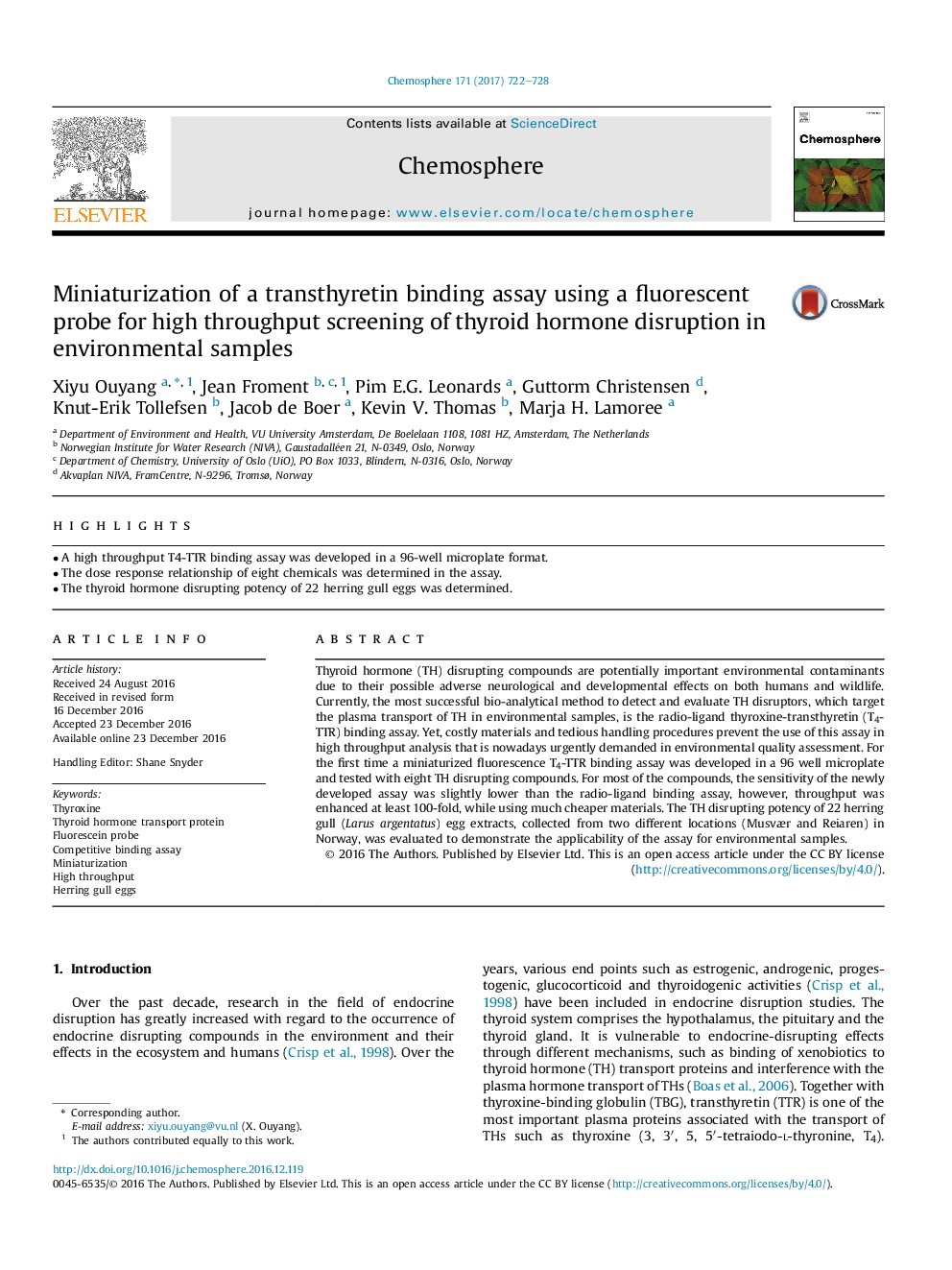| Article ID | Journal | Published Year | Pages | File Type |
|---|---|---|---|---|
| 5746350 | Chemosphere | 2017 | 7 Pages |
â¢A high throughput T4-TTR binding assay was developed in a 96-well microplate format.â¢The dose response relationship of eight chemicals was determined in the assay.â¢The thyroid hormone disrupting potency of 22 herring gull eggs was determined.
Thyroid hormone (TH) disrupting compounds are potentially important environmental contaminants due to their possible adverse neurological and developmental effects on both humans and wildlife. Currently, the most successful bio-analytical method to detect and evaluate TH disruptors, which target the plasma transport of TH in environmental samples, is the radio-ligand thyroxine-transthyretin (T4-TTR) binding assay. Yet, costly materials and tedious handling procedures prevent the use of this assay in high throughput analysis that is nowadays urgently demanded in environmental quality assessment. For the first time a miniaturized fluorescence T4-TTR binding assay was developed in a 96 well microplate and tested with eight TH disrupting compounds. For most of the compounds, the sensitivity of the newly developed assay was slightly lower than the radio-ligand binding assay, however, throughput was enhanced at least 100-fold, while using much cheaper materials. The TH disrupting potency of 22 herring gull (Larus argentatus) egg extracts, collected from two different locations (Musvær and Reiaren) in Norway, was evaluated to demonstrate the applicability of the assay for environmental samples.
